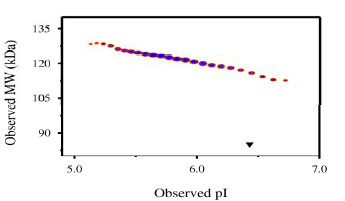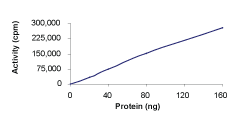| Gene Symbol |
FLT3
|
| Entrez Gene |
2322
|
| Alt Symbol |
CD135, FLK-2, FLK2, STK1
|
| Species |
Human
|
| Gene Type |
protein-coding
|
| Description |
fms-related tyrosine kinase 3
|
| Other Description |
CD135 antigen|FL cytokine receptor|fetal liver kinase 2|fms-like tyrosine kinase 3|growth factor receptor tyrosine kinase type III|receptor-type tyrosine-protein kinase FLT3|stem cell tyrosine kinase 1
|
| Swissprots |
F5H0A0 B7ZLT7 P36888 Q13414 A0AVG9 B7ZLT8
|
| Accessions |
AAB52916 CEO43471 EAX08424 EAX08425 P36888 AW057705 AW772610 BC036028 BC126350 AAI26351 BC144039 AAI44040 BC144040 AAI44041 BI461248 L36162 AAA35487 U02687 AAA18947 Z26652 CAA81393 XM_011535015 XP_011533317 XM_011535016 XP_011533318 XM_011535017 XP_011533319 XM_011535018 XP_011533320 NM_004119 NP_004110 NR_130706
|
| Function |
Tyrosine-protein kinase that acts as cell-surface receptor for the cytokine FLT3LG and regulates differentiation, proliferation and survival of hematopoietic progenitor cells and of dendritic cells. Promotes phosphorylation of SHC1 and AKT1, and activation of the downstream effector MTOR. Promotes activation of RAS signaling and phosphorylation of downstream kinases, including MAPK1/ERK2 and/or MAPK3/ERK1. Promotes phosphorylation of FES, FER, PTPN6/SHP, PTPN11/SHP-2, PLCG1, and STAT5A and/or STAT5B. Activation of wild-type FLT3 causes only marginal activation of STAT5A or STAT5B. Mutations that cause constitutive kinase activity promote cell proliferation and resistance to apoptosis via the activation of multiple signaling pathways. {ECO:0000269|PubMed:10080542, ECO:0000269|PubMed:11090077, ECO:0000269|PubMed:14504097, ECO:0000269|PubMed:16266983, ECO:0000269|PubMed:16627759, ECO:0000269|PubMed:18490735, ECO:0000269|PubMed:20111072, ECO:0000269|PubMed:21067588, ECO:0000269|PubMed:2126
|
| Subcellular Location |
Membrane; Single-pass type I membrane protein. Endoplasmic reticulum lumen. Note=Constitutively activated mutant forms with internal tandem duplications are less efficiently transported to the cell surface and a significant proportion is retained in an immature form in the endoplasmic reticulum lumen. The activated kinase is rapidly targeted for degradation.
|
| Tissue Specificity |
Detected in bone marrow, in hematopoietic stem cells, in myeloid progenitor cells and in granulocyte/macrophage progenitor cells (at protein level). Detected in bone marrow, liver, thymus, spleen and lymph node, and at low levels in kidney and pancreas. Highly expressed in T-cell leukemia. {ECO:0000269|PubMed:18490735, ECO:0000269|PubMed:7507245, ECO:0000269|PubMed:8394751, ECO:0000269|PubMed:8637232}.
|
| Top Pathways |
Cytokine-cytokine receptor interaction, Hematopoietic cell lineage, Acute myeloid leukemia, Central carbon metabolism in cancer, Transcriptional misregulation in cancer
|

